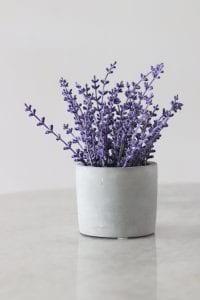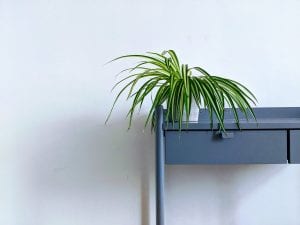Top 10 Houseplants to Brighten Your World
Houseplants are a great way to add freshness and a pop of color to your house’s interior. They also provide a myriad of health benefits such as reducing the carbon dioxide in your home, keeping indoor moisture regulated, and reducing stress. Sound like something you could use? Here are the top 10 houseplants to promote peace in your living space.
Snake Plant
Snake plants are one of the easiest plants to take care of. They don’t need to be watered very often; in fact, they will do well if they dry out for a few days between watering. The snake plant will thrive when placed in indirect sunlight, perfect for any room in your house!
Snake plants do a fantastic job of converting carbon dioxide into oxygen and removing toxins like formaldehyde from the air in your house. Just be sure to get more than one snake plant to maximize its effect!
Photo by Kara Eads on Unsplash
Aloe (Aloe Vera)
Aloe is a succulent plant, which means it requires very little water. It does, however, need plenty of sunlight, so be sure to place it near a large window. Once an aloe plant it potted, it can grow in the same container for years, almost making Aloe Vera a “set it and forget it” kind of plant. As a bonus, the sap inside an aloe leaf can be used to soothe burns and moisturize your skin!
Lemon Balm
Lemon balm is a member of the mint family. The plant gives off a natural scent that helps to improve your mood and boost the “happy” chemicals in your brain, like norepinephrine. It can also help relieve indigestion when the leaves are brewed as a tea, and you can even apply the leaves to a cold sore for relief.
The lemon balm plant will hold up well in practically any conditions, as long as it receives a decent amount of indirect sunlight. It requires a fair amount of water, but be sure to check the soil for moisture before watering the plant. Over-watering can cause the roots to rot if you’re not careful.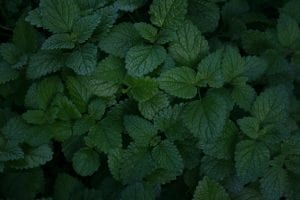
French Lavender
French lavender is infamous for its dainty purple flowers. It provides a soothing scent that promotes rest and stress relief, and its elegant color makes a perfect accent for virtually any room’s style. French lavender simply requires average amounts of water and plenty of sunlight to thrive.
Photo by Joyce Toh from Pexels
Peace Lily
Peace lilies produce gorgeous white flowers and leaf-like structures called spathes. They can absorb excess moisture from the air, reducing the presence of mildew in your house. The plant also naturally eliminates mold spores from the air!
The peace lily typically thrives in humid, warm conditions, but it will do well in your home if you don’t keep it in a room that is drafty or unheated for long periods of time. Because it can absorb moisture from the air, peace lilies are forgiving if you forget to water them.

Bamboo Palm
The bamboo palm is a beautiful plant that will also purify the air in your house. It absorbs toxins such as formaldehyde and benzene, a carcinogenic toxin linked to leukemia in adults.
Bamboo palm simply requires sufficient water and adequate sunlight in exchange for adding air purity and vibrancy to your living space. Adding some fertilizer to its soil during the growing season can help boost it’s volume as well!
Photo by katie manning on Unsplash
Chinese Evergreen
This plant can adapt to many different conditions and is incredibly forgiving. However, it will not thrive in rooms where the temperature is consistently below 60 degrees or drafty. It requires plenty of sunlight, so be sure to place it in your brightest room, but be careful not to overwater it. Give the soil enough time to stay dry for a few days before watering your Chinese evergreen again.
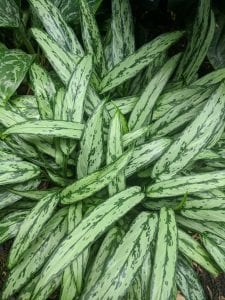
Spider Plant
If you pot a spider plant, its roots will most likely fill the whole thing. You will have to repot it every couple of years to accommodate its growth. They typically grow 2-3 feet long and 2-2½ feet wide! If your pots become overrun with the spider plant and its inevitable plant babies, you can plant them in hanging baskets to display around your windows.
In addition to purifying the air in your home, spider plants are edible, so they are a safe choice if you have young children or pets!
Photo by Lucian Alexe on Unsplash
Jade Plant
Jade plant is a succulent, but it is still one of the most tricky on this list since it is picky about the amount of water it receives. If you give a jade plant too little water, it will quickly drop its leaves. However, the roots will rot if you give it too much water. Striking this balance is crucial, but the gorgeous pink flowers that bloom will be worth your while!
A jade plant can help to remove toxins from the air inside your house, such as formaldehyde. However, it is most effective at eliminating toluene, a toxin that can cause exhaustion, insomnia, and weakness. You can also use the jade plant as a home remedy for nausea, diarrhea, and warts.
Photo by Lana Graves on Unsplash
Rosemary
Though considered to be an herb rather than directly classified as a houseplant, rosemary is known to improve mental function and clarity. For this reason, it’s beneficial to keep a few pots of rosemary around your house and particularly at your desk at work.
Rosemary is tricky to maintain just as the jade plant is. It needs to have access to direct sunlight for most of its lifespan. During its growing season, water your rosemary plants evenly, but be careful not to over-water them. They will also require less water in the winter months, so check the moisture of the soil between watering, and always remember to trim the rosemary after it flowers.
Photo by Vincent Foret on Unsplash

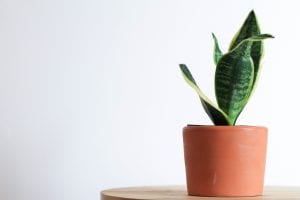
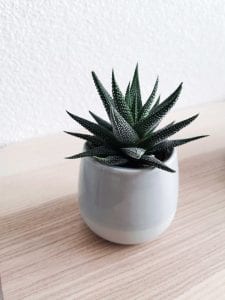 Photo by
Photo by 